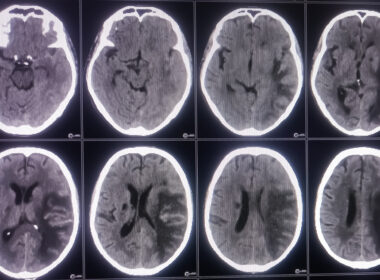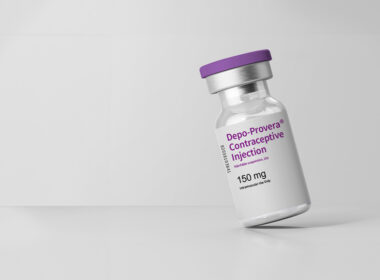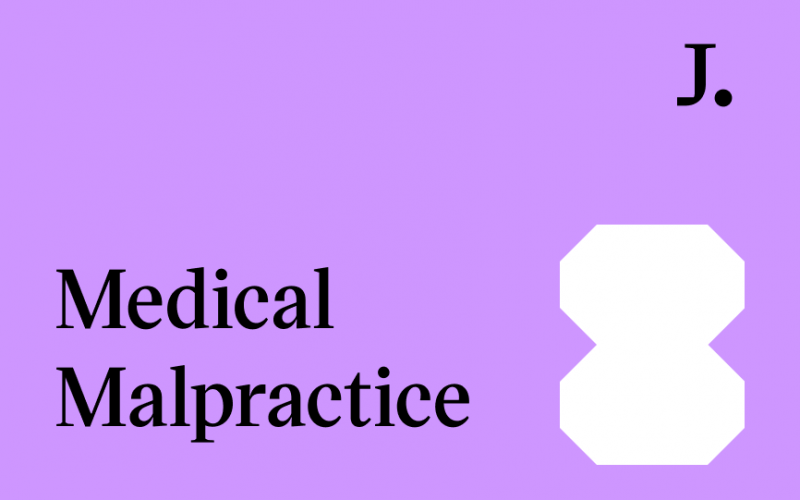Infants’ soft, pliable skulls, unlike those of adults, are designed to let them pass through the cervical canal more readily. However, this flexibility makes them particularly vulnerable to skull fractures. It is estimated that 10 percent of infants suffer skull fractures following birth.
Infant skull injuries are a prominent source of morbidity and mortality in children and call for immediate medical care.
The symptoms of an infant skull fracture can be modest or severe and incapacitating. They include agitation, weeping, sluggishness, head enlargement or depression, and seizures. It is critical to take note of the early signs of these skull fractures for early diagnosis and treatment. Otherwise, untreated skull fracture symptoms can have disastrous long-term repercussions.
This article seeks to answer some of the important questions parents may have about post-injury care for an infant who has suffered a skull fracture.
Let’s delve into the details.
What is an infant skull fracture?
An infant skull fracture is a break or cracks in the skull of a child that results in a disruption of the normal development of the brain. This can happen during childbirth, a fall, a hit to the head, or even a blow to the back of the head.
The bones in the skull of an infant are extremely fragile and thin. They can easily break or crack when a child is hit hard enough on their head or face. In some cases, a slight bump to the head can also cause a skull fracture.
How do skull injuries occur in babies?
The most common causes of skull fractures in babies include:
- Birth trauma. The baby’s head can move during birth and become trapped between the mother’s pelvic bones, causing injury to the brain.
- The pressure of tools used during childbirth. When delivering a baby, some doctors and others may use instruments like forceps or vacuum extractors to hold and pull the baby from the womb.
- Shaken baby syndrome (SBS). This is a form of physical child abuse caused by shaking or bumping an infant. It can also occur from the child being thrown on a hard surface.
- Falls from a height. A fall from a height can be traumatic for any baby, but it is especially dangerous for infants who have not yet developed their ability to protect themselves from injury by curling up into a protective ball.
- Sudden stops or jerks. Sudden stops or jerks like being dropped off a bed onto the floor can cause fractures in newborns as well as older children
- Concussion (injuries that occur when a blow to the head causes an unconscious state)
- In some cases, infants may be born with other medical conditions which cause them to fall frequently. These conditions include cerebral palsy and Down syndrome. They may also have mutations in genes that affect their ability to control their muscles and balance themselves while walking or standing up quickly.
Types of infant skull fractures
There are four types of infant skull fractures
- Linear skull fractures. These are the most common types of skull fractures. They occur when one side of the skull is hit by an object, such as a baseball or a fist. A linear injury does not often require any treatment and the child could resume their regular activities after a short medical observation.
- Diastatic skull fractures: These occur when there is a break in one of the bones in the skull called sutures (the fibers connecting two parts of your face). This can happen if the patient breaks their nose against something hard like ice, or hits their face against something sharp like tree bark. Diastatic fractures can also occur as a result of an assault.
- Depressed skull fractures. These types of facial fractures happen when the bone around the face is pushed inward and compressed against itself. The condition can be caused by many different things, but most commonly it occurs when someone falls on their head or gets hit in the face. Surgical intervention may be required for a depressed skull fracture to correct the deformity, depending on how severe the injury is.
- Basilar skull fractures. These occur at the base of your skull — where your ear meets your head. A basilar skull fracture may lead to damage to the inner part of the brain known as the cerebellum (the part responsible for balance and coordination), therefore requiring close medical observation of the patient.
This type of fracture is often caused by violent trauma from a car crash or gunshot wound, but it can also be caused by other types of injuries such as falls or blows to the head.
Potential skull injury symptoms to look out for in your child
Infant skull injuries present mild, moderate, or severe symptoms. The severity of the injury will depend on the location and size of the fracture as well as its proximity to other vital structures.
Mild injury
The most common symptom of a mild infant skull injury are:
- Headaches, dizziness, and lightheadedness
- Nausea, vomiting, and/or excessive crying.
- Irritability or fussiness
- Unusual behavior, such as sleepiness, lethargy, and irritability
- Difficulty sleeping or restlessness
- Sensitivity to light or noise
- Increased crying
- Loss of appetite
Moderate to severe head injury
In cases where there is more damage to the brain than is normal for an infant’s age, symptoms can be more severe and may require surgery.
Symptoms of moderate to severe infant skull fractures include:
- High fever
- Stiff neck or headache on one side of the child’s body
- Seizures
- Poor coordination
- Memory loss
- Confusion
- Personality changes
- Irritability or depression
- Loss of consciousness for less than 10 minutes at any time during an episode
- Throwing up blood or other substances
How are pediatric skull injuries diagnosed?
Diagnosing infant skull injuries can be challenging. However, the first thing a doctor will look at is the child’s age, gender, and weight. If there are any signs of bleeding, bruising, or other trauma in the area around the infant’s head, then the child could potentially have a head injury.
Doctors will also take into account any other symptoms that you might see in your children, such as loss of consciousness, bizarre behavior, seizures, and cardiac issues.
If there is any doubt about whether or not a fracture has occurred, the doctor may order an X-ray, MRI or CT scan, or a blood test to determine how severe it is and whether or not it needs further treatment.
Treatment of infant skull fracture
Treatment varies depending on the severity of your child’s injury and how well he can handle certain medications, procedures, or therapies.
Possible treatments include:
- Traction – The head is moved back and forth across the forehead or other bony area until bleeding stops or the brain moves back into place. This can be done by gently lifting the child’s head by its hair with one hand while firmly holding it in place with your other hand.
- Compression – A firm, but gentle, compression of the head using a soft cloth or pillow will help stop bleeding and reduce swelling.
- Ice – An ice pack wrapped in a towel can be held on the forehead for 10 minutes at a time to try to reduce swelling and pain.
- Cortisone cream – Topical cortisone cream such as hydrocortisone may be applied directly to the injured area to reduce inflammation.
- Antibiotics – If there is any possibility that the wound is infected, antibiotics should be given.
- Surgery – Surgery may be required to repair the bone fragments that are loose and cause pressure on the baby’s brain. However, surgery is not normally necessary for most head fractures.
- If your child develops post-concussion syndrome, he may be referred to a traumatic brain injury specialist for treatment.
Conclusion: Immediate treatment will help avoid long-term effects
A child that has suffered a serious head injury may experience complications later in life. The most common infant skull fracture long-term effects are speech and learning difficulties, changes in behavior and IQ, vision impairment, and partial paralysis.
If you suspect your child’s fractured skull is a result of medical malpractice, Justpoint will help you find the best infant skull fracture lawyer that will ensure you get the compensation you deserve.












